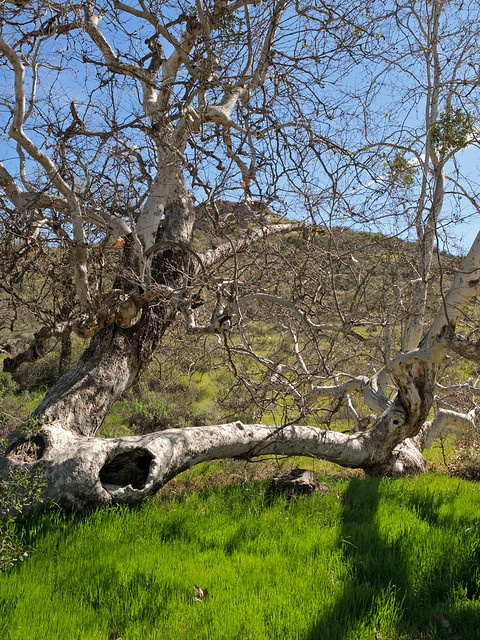June 28, 2011 "In a tiny corner of western Poland a forest of about 400 pine trees grow with a 90 degree bend at the base of their trunks - all bent northward. Surrounded by a larger forest of straight growing pine trees this collection of curved trees, or "Crooked Forest," is a mystery. Planted around 1930, the trees managed to grow for seven to 10 years before getting held down, in what is understood to have been human mechanical intervention. Though why exactly the original tree farmers wanted so many crooked trees is unknown."
Discovery News: "POLAND'S MYSTERIOUS CROOKED FOREST"Well, some suggest that it was a tree farm planted by some unknown individual/s who formed the trees early on to grow crooked, but then the war came and the venture lost purpose. The only thing is, no one really know who planted them or what his/her purpose was. Others have said it could have been several weather phenomena possibilities. Clearly either way they were bent when very young and them later recovered. Trees living near lakes may have been effected by great ice heaves or a similar effect could occur with a great wind storm, maybe an extremely heavy blizzard, then gradually grew straight upwards again. That actually happened to one of my young leggy Torrey Pine trees up in 4600' Elevation Anza CA. Most likely it was some type of plantation as seen from the even spacing of the trees. Whatever the case, the trees nevertheless instinctively knew which way to grow by information encoded into their DNA and a term we call Gravitropism. But this curved phenomena is actually quite common out in nature especially on steep mountain slopes.
 |
| Image - Mathieu Rodriguez |
Notice that no matter what direction the seed is placed, both leaves and roots know where their assigned destination is located. This apparently has to do with plant growth hormones called Auxins. The very term comes from a Greek word meaning to grow. These compounds have the ability to cause or induce cell elongation in stems. But interestingly, stem shoot cells require greater amounts of auxin for maximal growth, while root cells require very low concentrations for their optimal growth. Still it's all information controlled from withing their DNA from their birth at germination.
 |
| Phototropism |
 |
| California Sycamore |
| photo by Dale Ruthlinger |
*smile*




No comments:
Post a Comment
Thanks for visiting and stopping by with your comments!
I will try to respond to each comment within a few days, though sometimes I take longer if I'm too busy which appears to be increasing.